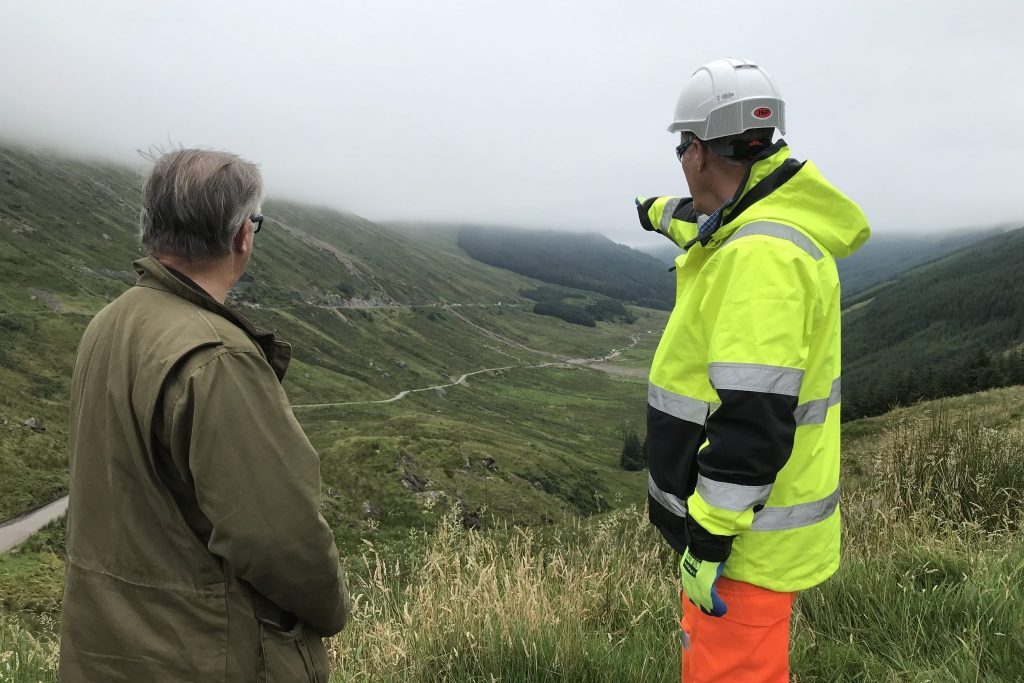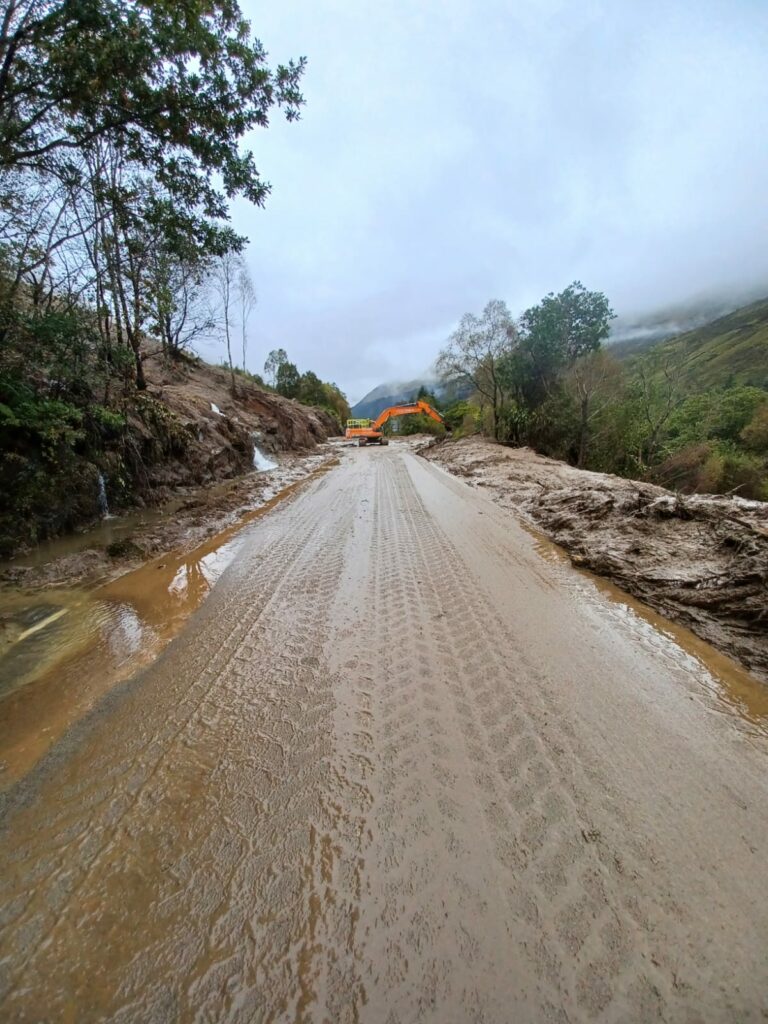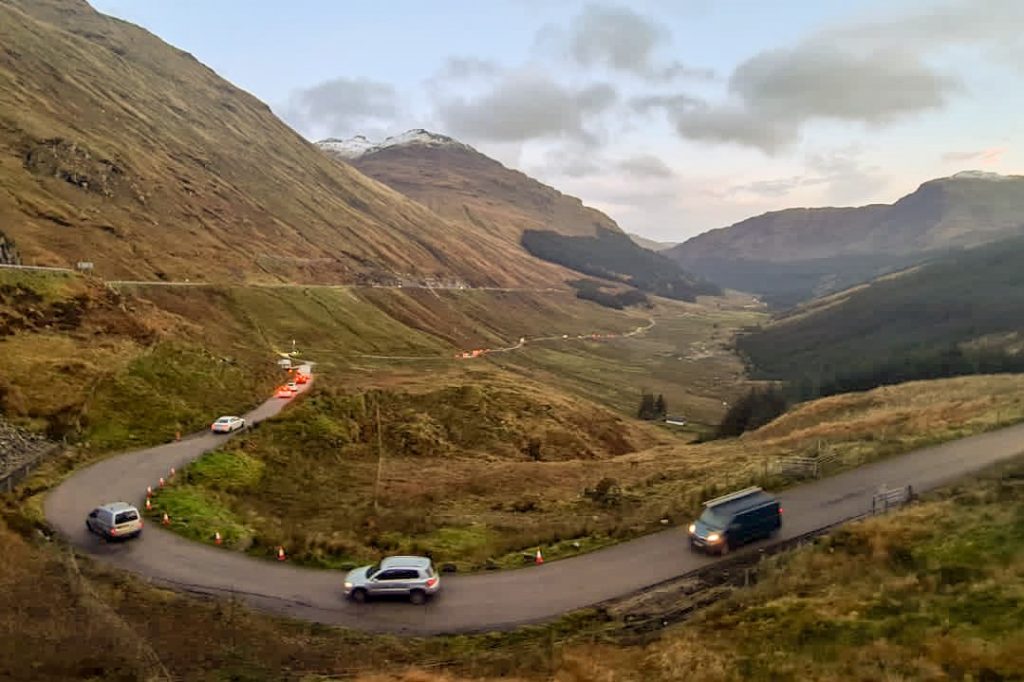Transport Scotland has spent over £11M clearing landslides from A83 Rest and Be Thankful since 2014

This post was originally published on this site

More than £11M has been spent by Transport Scotland clearing landslides that have impacted travel on the A83 Rest and Be Thankful since 2014, NCE has discovered through a Freedom of Information request.
The revelation comes as Transport Scotland’s roads contractor Bear Scotland today, 13 November, commences three weeks of surveys on the road.
Bear Scotland’s topographical surveys will inform the design of the tunnel. According to Transport Scotland, “the surveys are aimed at capturing features such as roads, service covers, structures, vegetation and boundary lines along the preferred route corridor”.
Early last month, the road closed as heavy and persistent rainfall caused several landslips. Before this it was closed for a total of 41 days on 12 separate occasions since 2007. In 2021 alone, the A83 closed for 13 days and 51 nights due to landslides, following the largest recorded landslide in the area in 2020, which triggered development assessment work to find a solution.
Over the 2020-21 tax year, Transport Scotland spent more than £4M remediating landslides that had impacted the A83 – the most costly year for remediating the road. However, 2022-23 was nearly as costly, with almost £3.6M spent clearing landslips.
Although this has been an issue for many years, the costs for clearing landslides really began to rise from 2018-19, with Transport Scotland spending over £1M almost every year since then.
In 2018-19, a total of £1.5M was spent and then the next tax year £1.4M was paid out.
2021-22 was an outlier where landslide remediation on the A83 only cost Transport Scotland £78,500.
The single month that cost Transport Scotland the most was December 2020, where landslides on the A83 saw the organisation fork out £1.3M. February and March of 2021 cost the organisation £430,689 and £686,893 respectively.
August 2019 was the second most expensive single month with £932,269 spent on clearing landslides from the Rest and Be Thankful.
The data provided indicates that Transport Scotland was able to recuperate close to £574,000 in 2021.
| Year | Expenditure |
| 2014/15 | £250,849.84 |
| 2015/16 | £188,055.91 |
| 2016/17 | £39,129.12 |
| 2017/18 | £1,500.99 |
| 2018/19 | £1,456,134.36 |
| 2019/20 | £1,373,689.75 |
| 2020/21 | £4,045,960.99 |
| 2021/22 | £93,732.28 |
| 2022/23 | £3,565,743.90 |
| Total | £11,014,797.14 |
Located 80km north of Glasgow, the Rest and Be Thankful viewpoint is the highest point on the A83 in Scotland. The road, which runs through a valley and links the west coast and the Highlands to Scotland’s central belt, has a high risk of landslides and debris flow hazards, which have increased in recent years due to the frequency of heavy and prolonged periods of rainfall.
Transport minister Fiona Hyslop said: “The Scottish government remains committed to delivering a long-term solution to the landslip risks at the A83 Rest and Be Thankful. The cabinet secretary for transport, net zero and just transition visited the A83 to see firsthand the challenges at the Rest and Be Thankful and the temporary diversion at the Old Military Road.
“There is a clear need for pace and urgency on delivering improvements to the A83 at the Rest and Be Thankful for the communities and businesses who often feel the brunt of closure and the associated impacts that creates. The announcement in June of the preferred route option for the long-term solution was a significant confirmation of our commitment to improve the route.
“During the four days of public exhibitions, 220 people came along to see and comment on our plans. Along with the face-to-face events, over 3,500 people had viewed the online exhibition by the time it closed on 28 July. This is testament to the wide public interest in the scheme.
“We are now considering all the comments received as we take forward at pace the detailed development and assessment of the preferred route option with a view to publishing draft orders by the end of next year.
“At the same time, we are progressing our plans to increase the resilience of the temporary diversion route along the Old Military Road until the long-term solution to the challenges at the Rest and Be Thankful is in place. Work will begin later this year to realign the southern end of the route. In advance of the work starting, we recently carried out ground investigations to help determine the conditions of the terrain along this section of the Old Military Road.
“The planned medium-term improvements will increase resilience of the temporary diversion route by reducing the likelihood of landslides impacting the route. These improvements will mean more certainty for locals and road users if the A83 has to shut due to adverse weather conditions.
“All of this underlines the Scottish government’s commitment to work with key stakeholders and local communities to ensure that Argyll & Bute remains open for business.”
Like what you’ve read? To receive New Civil Engineer’s daily and weekly newsletters click here.





Responses